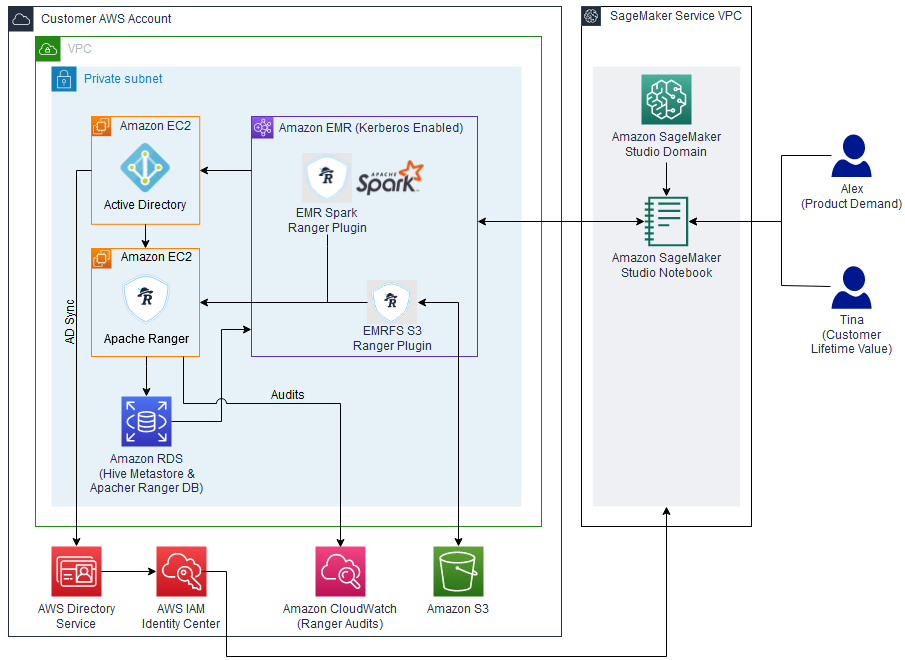AWS Big Data Blog
Category: Amazon SageMaker
Protein similarity search using ProtT5-XL-UniRef50 and Amazon OpenSearch Service
A protein is a sequence of amino acids that, when chained together, creates a 3D structure. This 3D structure allows the protein to bind to other structures within the body and initiate changes. This binding is core to the working of many drugs. A common workflow within drug discovery is searching for similar proteins, because […]
Build a decentralized semantic search engine on heterogeneous data stores using autonomous agents
In this post, we show how to build a Q&A bot with RAG (Retrieval Augmented Generation). RAG uses data sources like Amazon Redshift and Amazon OpenSearch Service to retrieve documents that augment the LLM prompt. For getting data from Amazon Redshift, we use the Anthropic Claude 2.0 on Amazon Bedrock, summarizing the final response based on pre-defined prompt template libraries from LangChain. To get data from Amazon OpenSearch Service, we chunk, and convert the source data chunks to vectors using Amazon Titan Text Embeddings model.
Hybrid Search with Amazon OpenSearch Service
This post explains the internals of hybrid search and how to build a hybrid search solution using OpenSearch Service. We experiment with sample queries to explore and compare lexical, semantic, and hybrid search. All the code used in this post is publicly available in the GitHub repository.
Preprocess and fine-tune LLMs quickly and cost-effectively using Amazon EMR Serverless and Amazon SageMaker
Large language models (LLMs) are becoming increasing popular, with new use cases constantly being explored. In general, you can build applications powered by LLMs by incorporating prompt engineering into your code. However, there are cases where prompting an existing LLM falls short. This is where model fine-tuning can help. Prompt engineering is about guiding the […]
Power neural search with AI/ML connectors in Amazon OpenSearch Service
With the launch of the neural search feature for Amazon OpenSearch Service in OpenSearch 2.9, it’s now effortless to integrate with AI/ML models to power semantic search and other use cases. OpenSearch Service has supported both lexical and vector search since the introduction of its k-nearest neighbor (k-NN) feature in 2020; however, configuring semantic search […]
Implement fine-grained access control in Amazon SageMaker Studio and Amazon EMR using Apache Ranger and Microsoft Active Directory
In this post, we show how you can authenticate into SageMaker Studio using an existing Active Directory (AD), with authorized access to both Amazon S3 and Hive cataloged data using AD entitlements via Apache Ranger integration and AWS IAM Identity Center (successor to AWS Single Sign-On). With this solution, you can manage access to multiple SageMaker environments and SageMaker Studio notebooks using a single set of credentials. Subsequently, Apache Spark jobs created from SageMaker Studio notebooks will access only the data and resources permitted by Apache Ranger policies attached to the AD credentials, inclusive of table and column-level access.
Create, train, and deploy Amazon Redshift ML model integrating features from Amazon SageMaker Feature Store
Amazon Redshift is a fast, petabyte-scale, cloud data warehouse that tens of thousands of customers rely on to power their analytics workloads. Data analysts and database developers want to use this data to train machine learning (ML) models, which can then be used to generate insights on new data for use cases such as forecasting […]
Unstructured data management and governance using AWS AI/ML and analytics services
In this post, we discuss how AWS can help you successfully address the challenges of extracting insights from unstructured data. We discuss various design patterns and architectures for extracting and cataloging valuable insights from unstructured data using AWS. Additionally, we show how to use AWS AI/ML services for analyzing unstructured data.
How Chime Financial uses AWS to build a serverless stream analytics platform and defeat fraudsters
This is a guest post by Khandu Shinde, Staff Software Engineer and Edward Paget, Senior Software Engineering at Chime Financial. Chime is a financial technology company founded on the premise that basic banking services should be helpful, easy, and free. Chime partners with national banks to design member first financial products. This creates a more […]
Harmonize data using AWS Glue and AWS Lake Formation FindMatches ML to build a customer 360 view
In today’s digital world, data is generated by a large number of disparate sources and growing at an exponential rate. Companies are faced with the daunting task of ingesting all this data, cleansing it, and using it to provide outstanding customer experience. Typically, companies ingest data from multiple sources into their data lake to derive […]









